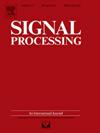A bio-inspired approach to line segment detection utilizing orientation-selective neurons
IF 3.4
2区 工程技术
Q2 ENGINEERING, ELECTRICAL & ELECTRONIC
引用次数: 0
Abstract
Line segment detection is essential for tasks like SLAM, camera pose estimation, and 3D reconstruction. Although many excellent line segment detection methods have been proposed, detecting more true positives while rejecting false positives remains challenging. The human visual system can effectively perceive line segments in complex environments through a processing pathway involving multiple visual cortices. Inspired by this, we propose a novel bio-inspired line segment detection method that mimics the perception of line segments in the visual cortex. Our method models orientation-selective neurons in the primary and secondary visual cortices. Based on the preferred orientations of these neurons, we integrate them to mimic the function of orientation and curvature domains in the fourth visual cortex, generating continuous and smooth edge segments. A post-processing step, including least squares line fitting and gap merging, is employed to obtain line segments. We evaluated our method against other state-of-the-art methods on YorkUrban-LineSegment and Wireframe. Results show that our method achieves a higher F-score, improving by 2.9% and 2.1%, respectively, while ensuring both precision and recall. Additionally, in 3D reconstruction, our method produces more complete and accurate scenes with fewer fragments and omissions compared to other methods. Our code is available at https://github.com/DaipengYang7/BILSD.
利用定向选择神经元进行线段检测的仿生方法
线段检测对于SLAM、相机姿态估计和3D重建等任务至关重要。尽管已经提出了许多优秀的线段检测方法,但检测出更多的真阳性同时拒绝假阳性仍然具有挑战性。人类视觉系统通过涉及多个视觉皮层的处理通路,能够有效地感知复杂环境中的线段。受此启发,我们提出了一种新的仿生线段检测方法,该方法模仿视觉皮层对线段的感知。我们的方法模拟了初级和次级视觉皮层的定向选择神经元。基于这些神经元的偏好方向,我们将它们整合起来,模拟第四视觉皮层的方向域和曲率域的功能,生成连续光滑的边缘段。采用最小二乘拟合和间隙合并等后处理步骤获得线段。我们在YorkUrban-LineSegment和Wireframe上对比了我们的方法。结果表明,该方法在保证查准率和查全率的前提下,取得了较高的f值,分别提高了2.9%和2.1%。此外,在3D重建中,与其他方法相比,我们的方法产生的场景更完整和准确,碎片和遗漏更少。我们的代码可在https://github.com/DaipengYang7/BILSD上获得。
本文章由计算机程序翻译,如有差异,请以英文原文为准。
求助全文
约1分钟内获得全文
求助全文
来源期刊

Signal Processing
工程技术-工程:电子与电气
CiteScore
9.20
自引率
9.10%
发文量
309
审稿时长
41 days
期刊介绍:
Signal Processing incorporates all aspects of the theory and practice of signal processing. It features original research work, tutorial and review articles, and accounts of practical developments. It is intended for a rapid dissemination of knowledge and experience to engineers and scientists working in the research, development or practical application of signal processing.
Subject areas covered by the journal include: Signal Theory; Stochastic Processes; Detection and Estimation; Spectral Analysis; Filtering; Signal Processing Systems; Software Developments; Image Processing; Pattern Recognition; Optical Signal Processing; Digital Signal Processing; Multi-dimensional Signal Processing; Communication Signal Processing; Biomedical Signal Processing; Geophysical and Astrophysical Signal Processing; Earth Resources Signal Processing; Acoustic and Vibration Signal Processing; Data Processing; Remote Sensing; Signal Processing Technology; Radar Signal Processing; Sonar Signal Processing; Industrial Applications; New Applications.
 求助内容:
求助内容: 应助结果提醒方式:
应助结果提醒方式:


